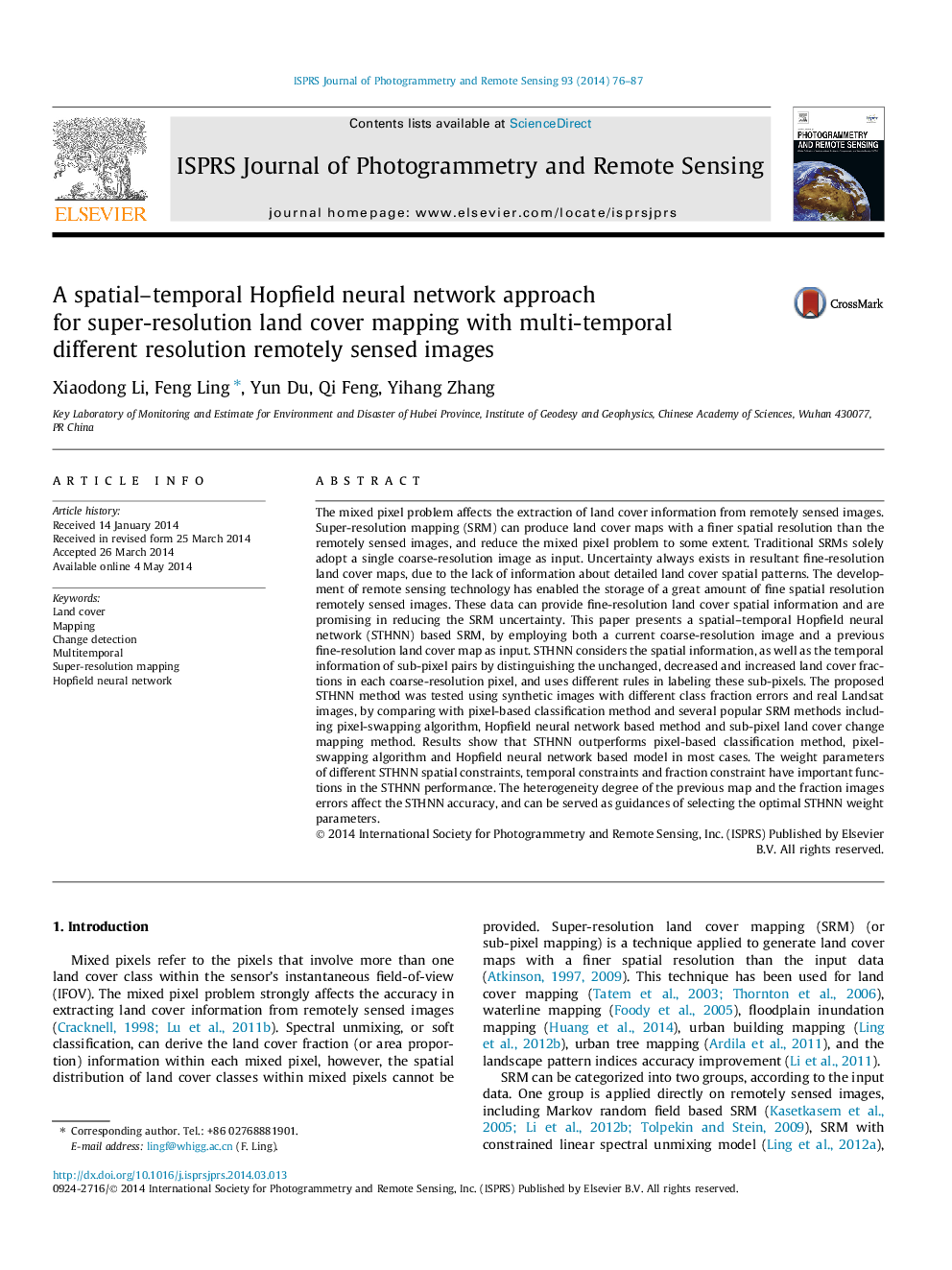| Article ID | Journal | Published Year | Pages | File Type |
|---|---|---|---|---|
| 6949647 | ISPRS Journal of Photogrammetry and Remote Sensing | 2014 | 12 Pages |
Abstract
The mixed pixel problem affects the extraction of land cover information from remotely sensed images. Super-resolution mapping (SRM) can produce land cover maps with a finer spatial resolution than the remotely sensed images, and reduce the mixed pixel problem to some extent. Traditional SRMs solely adopt a single coarse-resolution image as input. Uncertainty always exists in resultant fine-resolution land cover maps, due to the lack of information about detailed land cover spatial patterns. The development of remote sensing technology has enabled the storage of a great amount of fine spatial resolution remotely sensed images. These data can provide fine-resolution land cover spatial information and are promising in reducing the SRM uncertainty. This paper presents a spatial-temporal Hopfield neural network (STHNN) based SRM, by employing both a current coarse-resolution image and a previous fine-resolution land cover map as input. STHNN considers the spatial information, as well as the temporal information of sub-pixel pairs by distinguishing the unchanged, decreased and increased land cover fractions in each coarse-resolution pixel, and uses different rules in labeling these sub-pixels. The proposed STHNN method was tested using synthetic images with different class fraction errors and real Landsat images, by comparing with pixel-based classification method and several popular SRM methods including pixel-swapping algorithm, Hopfield neural network based method and sub-pixel land cover change mapping method. Results show that STHNN outperforms pixel-based classification method, pixel-swapping algorithm and Hopfield neural network based model in most cases. The weight parameters of different STHNN spatial constraints, temporal constraints and fraction constraint have important functions in the STHNN performance. The heterogeneity degree of the previous map and the fraction images errors affect the STHNN accuracy, and can be served as guidances of selecting the optimal STHNN weight parameters.
Keywords
Related Topics
Physical Sciences and Engineering
Computer Science
Information Systems
Authors
Xiaodong Li, Feng Ling, Yun Du, Qi Feng, Yihang Zhang,
